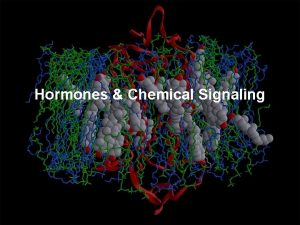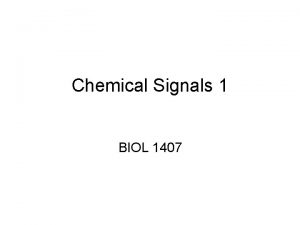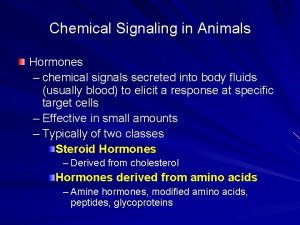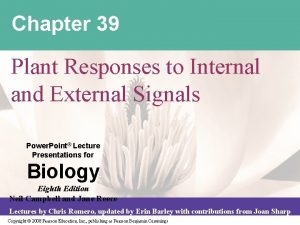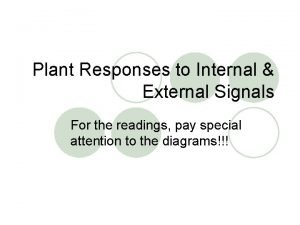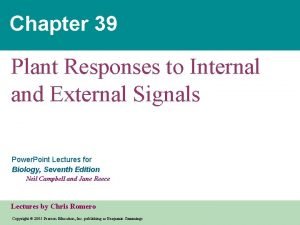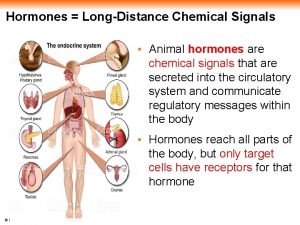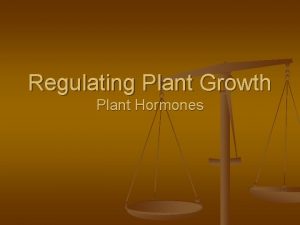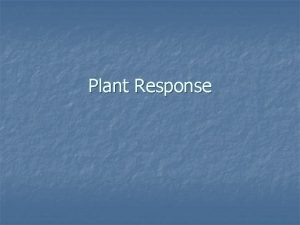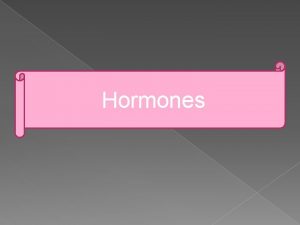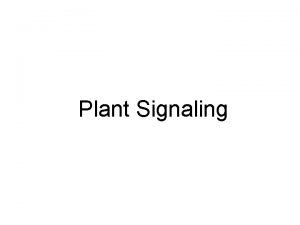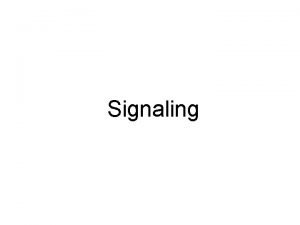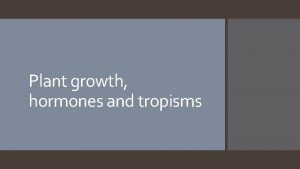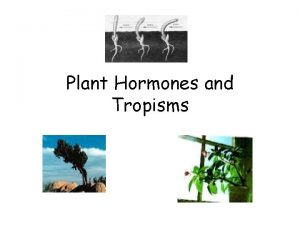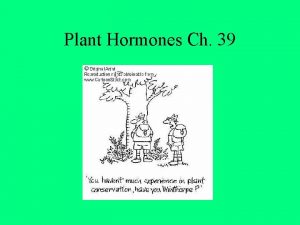Plant Signaling and Response Hormones Review chemical signals














- Slides: 14

Plant Signaling and Response

Hormones Review • chemical signals that coordinate parts of an organism • produced in one part and transported to another • often work together to induce a change • minute amounts can induce substantial change

Signal Transduction

Signal Transduction 1. Reception: signals are detected by receptor proteins 2. Transduction: second messenger chemicals transfer and amplify the signal from the receptor to proteins that cuase the specific response. 3. Response: regulation of cellular activities by proteins

Plant Hormone Carousel

Tropisms • Any growth response that results in curvatures of whole plant organs toward or away from a stimuli

Phototropism • Phototropism: growth of shoot toward light. • Auxin plays a major role in this response. • Darwin, Boysen-Jensen, and Went experiments with phototropism led to the discovery of plant hormones.

Phototropism Experiments

Gravitropism • Gravitropism: a plant’s response to gravity. • Roots display positive gravitropism. / Shoots display negative gravitropism. • Auxin plays a major role in this response. • Plants may be able to tell up from down by the settling of statoliths.

Thigmotropism • Thigmotropism: directional growth in response to touch. • Thigmomorphogensi s: changes in form that result from mechanical stimuli. • Twining motions of vines video clip (Circumnuation)

Another Touch Response • Thygmonastic Movement ▫ Use action potentials similar to animal nervous-system messages ▫ Change the turgor pressure results in movement • Fly Trap Video Clip

Photoperiodism • Plants use the photoperiod (relative lengths of night and day) to detect the time of year. • Photoperiodism: a physiological response to photoperiod • Plants detect light with photoreceptors such as phytochrome and cryptochrome. • Long day plants are actually short night plants.

Photoperiod and Flowering

 Chemical signaling
Chemical signaling Chemical signaling
Chemical signaling Chemical signaling
Chemical signaling Animals and human language chapter 2
Animals and human language chapter 2 Informative signals example
Informative signals example Communicative signals and informative signals
Communicative signals and informative signals Respond to
Respond to Plant hormones and responses
Plant hormones and responses Empirical formula pogil
Empirical formula pogil Modern chemistry chapter 7 review answers
Modern chemistry chapter 7 review answers Cytokinin function
Cytokinin function Riken
Riken Hormones chemical classification
Hormones chemical classification Plant responses to internal and external signals
Plant responses to internal and external signals Chapter 39 plant responses to internal and external signals
Chapter 39 plant responses to internal and external signals
